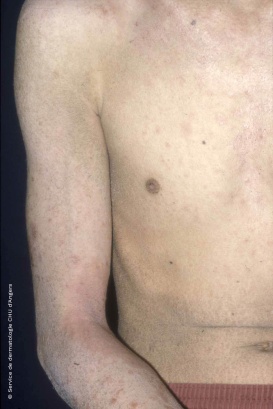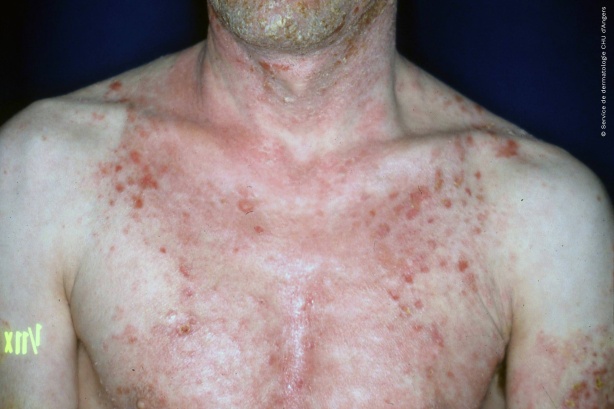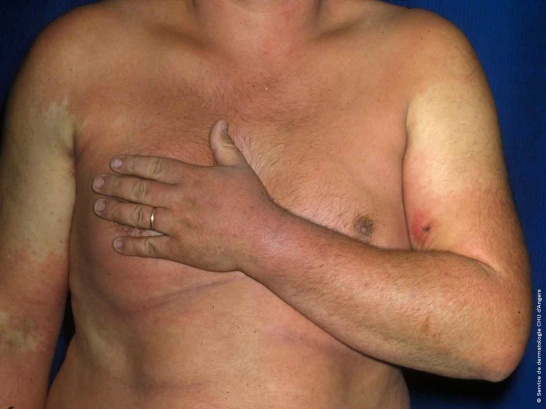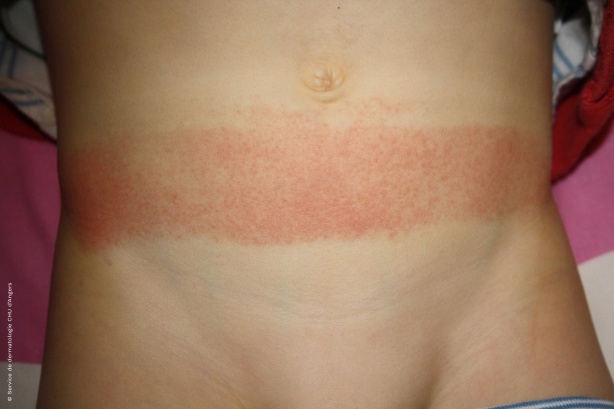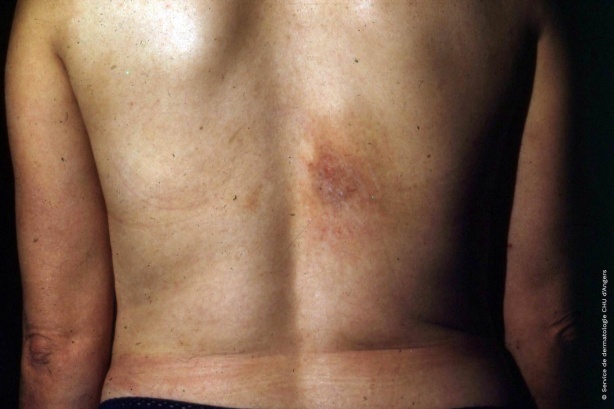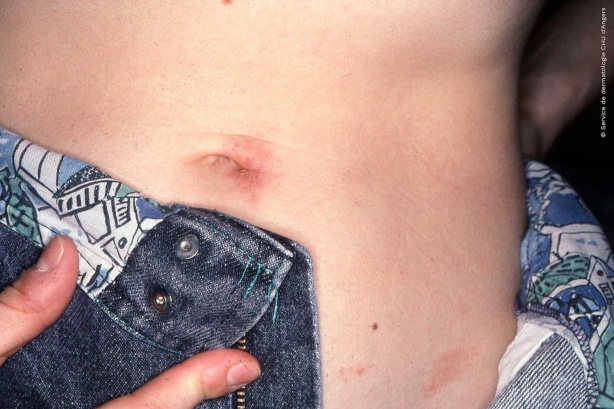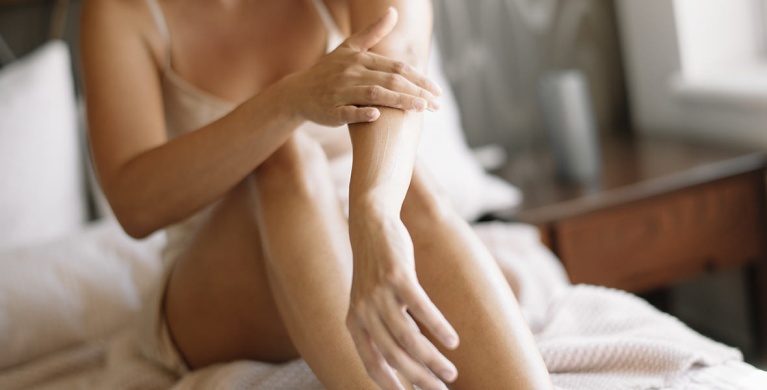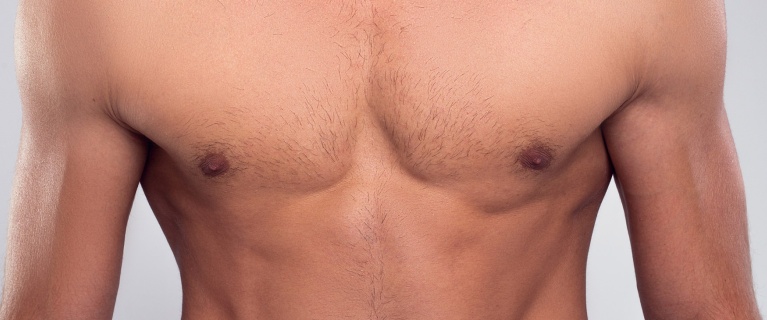

Eczema on the torso
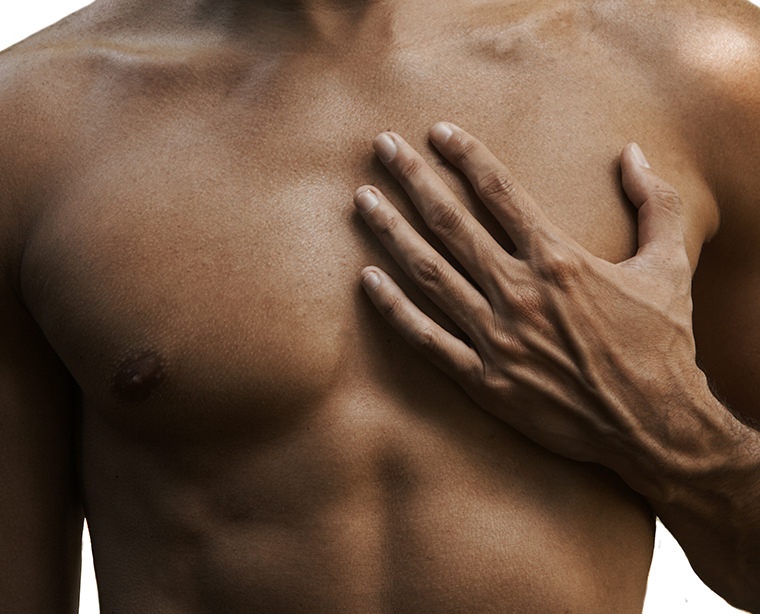
Both allergic eczema and atopic eczema can appear on the torso, chest or stomach. But each type of eczema requires a different solution!
In infants, this may be the first sign of atopy, which usually begins to show up at this age. Or it could be an allergic reaction to a product, either through direct contact or indirectly via mom’s or dad’s hands for example.
Eczema on the torso
If eczema is present on several areas of the body and/or if there is a history of atopy, it may very well be atopic eczema. Atopic eczema is the skin manifestation of atopy, a genetic hypersensitivity to the environment, just as asthma is its respiratory manifestation.
In the case of eczema, the skin malfunctions and becomes abnormally permeable, thus over-reacting to its environment. This leads to eczema flare-ups.
Your doctor will prescribe cortisone creams to soothe inflammation, but you will also need to keep your skin well hydrated in order to repair it and prevent flare-ups.
Wear suitable clothing and limit the amount of detergent you use
To avoid making the irritation worse, wear cotton clothing and reduce the amount of detergent you use.
Allergic eczema on the torso
Contact eczema is caused by an allergic reaction.
The triggering products or objects
It is most often an allergy to clothing or to an undergarment. For example, certain textile finishes used to make clothes wrinkle-resistant can contain allergens.
When redness is limited to the torso, you may also want to consider cosmetics or cleansing products that may have been applied to this area: shower gels, wipes, creams, etc.
Allergies are never triggered upon first exposure. You may have used a shower gel all your life, for example, without a problem; then suddenly it triggers a reaction...
The product or object causing the allergy does not necessarily need to come into direct contact with the torso; it may be transferred indirectly via the hands, clothing or even another person.
What should you do?
Consult with a doctor, who will help you identify the triggering allergen by asking the right questions and carrying out allergy patch tests. This will then enable you to avoid all products that contain this allergen in your daily routine.
Your doctor may also prescribe a topical corticosteroid (cortisone cream) to soothe itching and treat eczema.
Not to be confused with seborrheic dermatitis
Seborrheic dermatitis can also appear on the torso, but with one critical difference: it is limited only to the middle region of the chest, between the breasts. In addition to the chest, it often appears on the face, in the folds on both sides of the nose and on the edge of the scalp, along with “itchy dandruff” (commonly known as “cradle cap” in infants). Seborrheic dermatitis is different from eczema.
